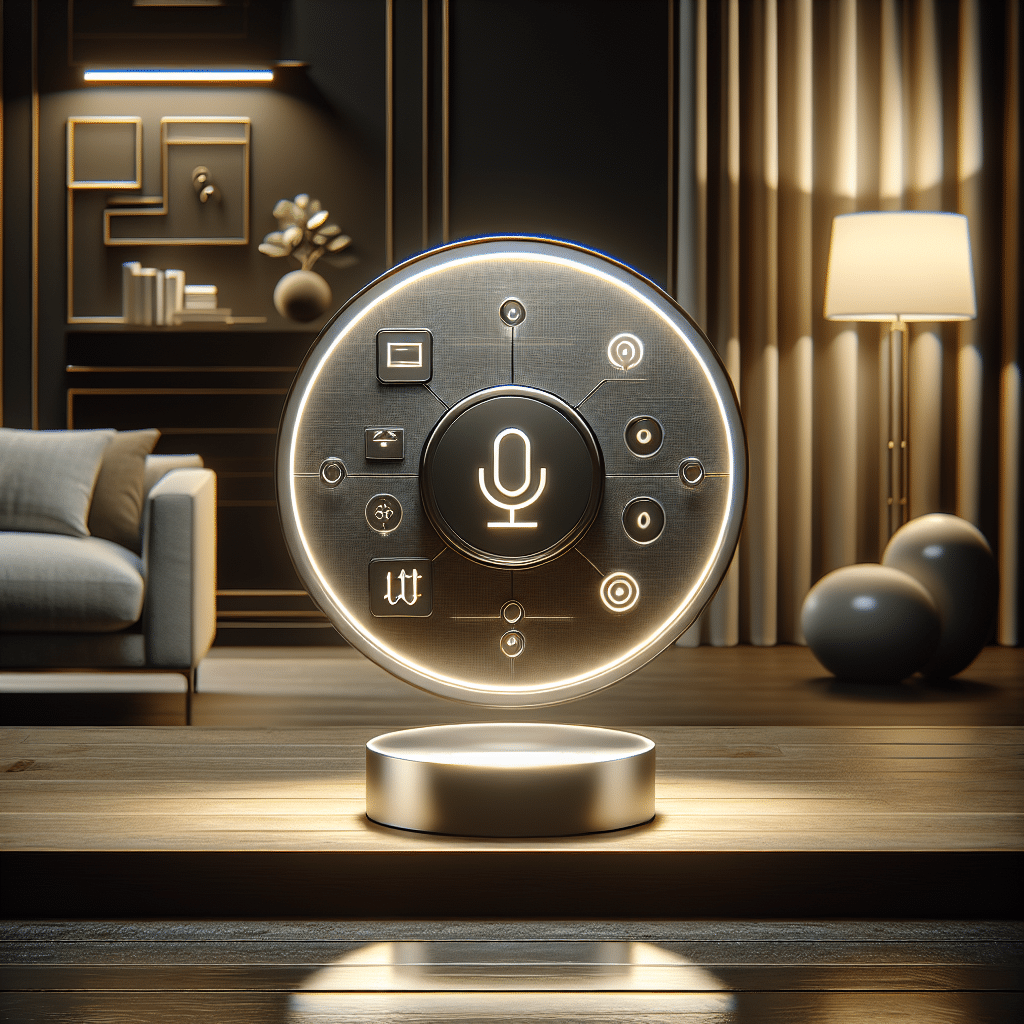Understanding Voice-Controlled Automation Hubs for Smart Living
What Are Voice-Controlled Automation Hubs?
Voice-controlled automation hubs serve as the nerve center for smart home ecosystems, enabling users to seamlessly manage various devices through voice commands. These hubs support a range of smart devices, including lights, thermostats, security systems, and entertainment units, facilitating an interconnected smart living experience.
Key Features of Voice-Controlled Automation Hubs
-
Voice Recognition and Natural Language Processing:
Modern voice assistants utilize advanced algorithms to understand natural language, allowing users to issue commands in everyday speech. This capability enhances user experience, making smart home management intuitive. -
Device Compatibility:
A robust automation hub supports multiple protocols like Zigbee, Z-Wave, Wi-Fi, and Bluetooth, ensuring compatibility with a wide array of devices from various manufacturers. This flexibility allows users to expand their systems without being locked into a single ecosystem. -
Customizable Routines:
Users can set up personalized routines that automate a series of actions. For instance, a “Good Morning” routine could turn on lights, brew coffee, and adjust the thermostat, all initiated by a simple voice command. -
Remote Access:
Many hubs offer mobile applications that allow users to control their devices remotely. This feature is particularly useful for security, enabling users to monitor their homes even when they are away. -
Integration with Third-Party Services:
Voice automation hubs can integrate with other smart services like IFTTT (If This Then That), allowing users to create more complex automations and further extend the functionality of their homes.
Popular Voice-Controlled Automation Hubs
-
Amazon Echo:
Utilizing the Alexa voice assistant, the Amazon Echo serves as a top choice for many smart home enthusiasts. It boasts extensive compatibility with various devices, supports routines, and offers features like music streaming and news updates. -
Google Nest Hub:
Powered by Google Assistant, the Nest Hub offers similar features alongside Google’s superior search capabilities. It can display visual information such as weather updates, recipe steps, and calendar events, enriching the user experience. -
Apple HomePod:
Tailored for users within the Apple ecosystem, the HomePod leverages Siri to control smart devices. Its strength lies in seamless integration with iOS devices and the ability to create automations through the Apple Home app. -
Samsung SmartThings:
This hub offers a versatile platform that combines its own devices with those from other brands. It supports Zigbee and Z-Wave, enhancing compatibility and making it suitable for users with varied smart devices. -
Raspberry Pi:
For tech-savvy users, Raspberry Pi can be configured as a DIY smart home hub. This flexibility allows for tailored automation systems, albeit requiring a higher level of technical knowledge.
Benefits of Voice-Controlled Automation Hubs
-
Enhanced Accessibility:
Voice-controlled systems remove barriers for individuals with mobility or dexterity challenges. Users can manage their environments effortlessly, enhancing quality of life. -
Energy Efficiency:
Automation can lead to smarter energy consumption. Users can program devices to operate only when needed, such as turning off lights when leaving a room, which can reduce energy bills and support sustainability efforts. -
Improved Home Security:
Integration with security systems allows users to issue commands like “lock the doors” or “turn on the security cameras” while they are away. Some voice-controlled hubs can even notify users of suspicious activities through alerts. -
Easy Configuration:
Setting up a voice-controlled hub can normally be accomplished through mobile apps, making it easier for users to design their smart homes without extensive technical knowledge.
Disadvantages and Considerations
-
Privacy Concerns:
While voice recognition technology offers convenience, it also raises concerns regarding privacy. Smart speakers are always listening for commands, which can lead to unintentional data collection and potential vulnerabilities. -
Internet Dependency:
Many voice-controlled features rely heavily on internet connectivity. Disconnection from the internet can limit functionality, necessitating a stable and robust internet connection for optimal operation. -
Learning Curve:
Although generally user-friendly, some users may find a learning curve associated with effectively using and integrating various voice commands and functionalities. -
Cost Implications:
Integrating numerous devices into a smart home ecosystem can become costly, especially when opting for premium products and services.
Tips for Maximizing Your Voice-Controlled Automation Hub
-
Regular Software Updates:
Keep your hub and connected devices updated to ensure optimal performance, security patches, and new features. Most hubs will notify users when updates are available. -
Explore Integration Options:
Take advantage of the hub’s compatibility with various smart devices and services. Explore third-party integrations to enhance your home automation setup. -
Utilize Routines and Scenes:
Experiment with different routines and flavor your commands for various occasions. Creating scenes can help manage your home more effectively and simplify user interaction. -
Voice Command Familiarity:
Familiarize yourself with the specific commands that your voice assistant recognizes, as this knowledge can streamline interactions and enhance the overall experience. -
Prioritize Security:
Regularly monitor and adjust the privacy settings of your devices and use features that allow you to mute microphones when not in use. Educate all household members on privacy best practices.
The Future of Voice-Controlled Automation Hubs
The future of smart living is poised for continued growth and sophistication. Emerging technologies such as artificial intelligence and machine learning will undoubtedly enhance voice-controlled automation hubs, making them more intuitive and seamlessly integrated into daily life.
The trend toward IoT (Internet of Things) connectivity will lead to even broader compatibility among devices, fostering a more interconnected home. Furthermore, advancements in natural language processing will only improve recognition accuracy and enhance user satisfaction.
As the technology continues to evolve, the possibilities for voice-controlled automation hubs appear boundless. The integration of new functionalities such as gesture control in conjunction with voice commands could revolutionize user interaction.
Final Thoughts
Voice-controlled automation hubs are transforming homes into efficient, smart living spaces. With their remarkable capabilities, convenience, and the ongoing evolution of technology, these hubs represent a glimpse into the future of home automation. Embracing the potential of voice-activated systems facilitates improved comfort, security, and energy efficiency, helping users create an ideal smart home environment.
